

Matthew
-
Posts
136 -
Joined
-
Last visited
Content Type
Profiles
Forums
Events
Gallery
Store
Posts posted by Matthew
-
-
Fish are still out there. On the surface in 40-100 fow there are Steelies and in 330 fow there are kings down 310'. Temp on the surface is 44 degrees and down 310 the temp is 42 degrees. Current down 310 feet was from west to east at .5mph.
-
Was on Lake O on Sunday, Fish were down 310 in 330FOW. There was a temp change of 2 degrees down 310 and the current changed there also by .5mph.
-
Wire on it's own will sink at a rate of 8' / 100' of line out, braid floats.
-
Went to the Lake Michigan Angler website and 900 feet of Power pro 30lb costs $27.59 while 1000 feet of 30lb 7 strand wire line costs $24.95.
Wire line costs less then Power Pro. See links below.
-
I have heard this rumor also. If it's true then it is excellent news!!
-
Agreed, angle must be forward 10 degrees.
I probably shouldn't have mentioned a company name, now the mods will remove this post...lol
-
Transom 1kw high speed transducer from Radarsonics
-
I have an HDS8 and mine shows bait and fish at full throttle.
-
Gotta keep your eyes on those walleye guys

-
The winner was Peche Extreme lead by Captain Greg Amiel. Total 2 day weight was over 163lbs for 10 fish (5 fish per day).
For those that don't know, at the beginning of the tournament, two team members of the winning team said that if they won first place they would cut their long hair off.
Greg Amiel from fishing4tails ( the team quarterback ) put together multiple programs for the winning team. I promised not to reveal the programs on a web board but a close look at the pictures and you can probably guess.
For pictures go to facebook and type Torpedo Divers
-
and of course this wasn't just a free promotional spot/advertisement for Matthew's products (torpedo divers) masquerading as a tip

Tim
What I was saying is that using anymore then 4 colors of leadcore is old school and is not necessary. Yes we manufacture the Torpedo Divers so that is my product of choice to achieve depth control. There are other methods of getting your leadcore deeper so use your method of choice.
What methods do you use to get your leadcore to 50', 100' or even 150' depths? Please share info as we am always willing to learn more efficient methods of improving my spread.
-
We found that after 4 colors of leadcore the presentation has been maxed out and there are more efficient methods of achieving depth.
We only use 4 colors of leadcore on the boat, then we use Torpedo Divers for precision to get baits to any depth. Our leadcore rods do double duty instead of being stuck at one depth.
It didn't make sense to us to spend over $350 on a dedicated 10 color leadcore rod setup and then be stuck at one depth when most times the fish are at different depths.
-
Update
1 cat 45 left, 1- 15D left
-
Update
1- Cat left, 1- 30D left, 1- 15D left
-
I have the following used reels for sale with new wire fishing line.
Gently used on Lake Erie.
3- Okuma Convector 15D line counter spooled with new 19 strand wire line. $60 each.
3- Okuma Convector 30D line counter spooled with your choice of new 7 strand 20lb, 30lb or 45lb wire line. $80 each
2- Okuma Catalina 45D line counter (2009 older style) spooled with your choice of new 7 strand 20lb, 30lb or 45lb wire line. $ 160 each.
All reels are in the same condition.
Catalina 45d
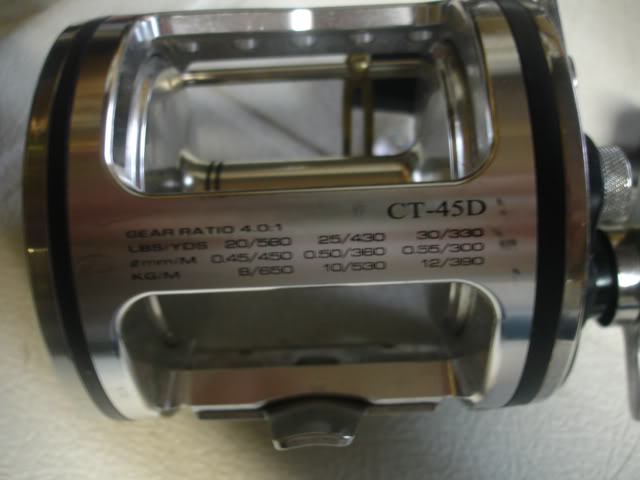
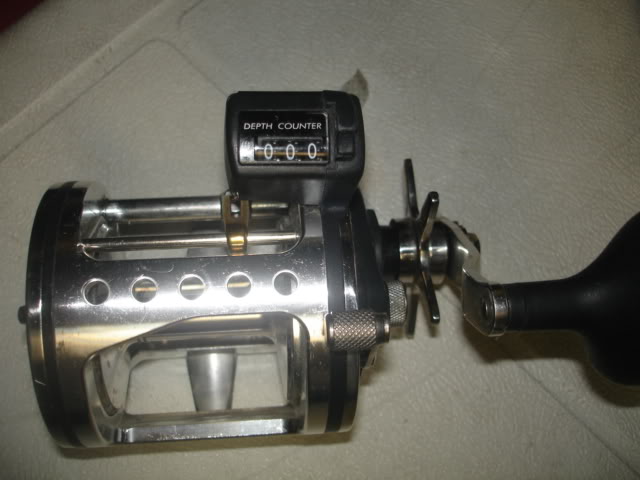
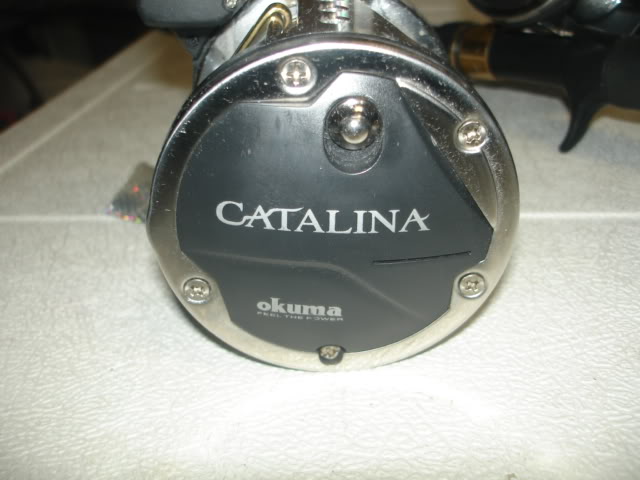
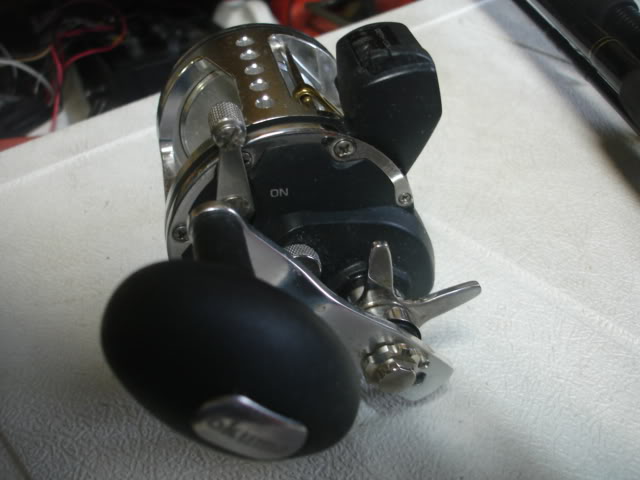
Convector 30D
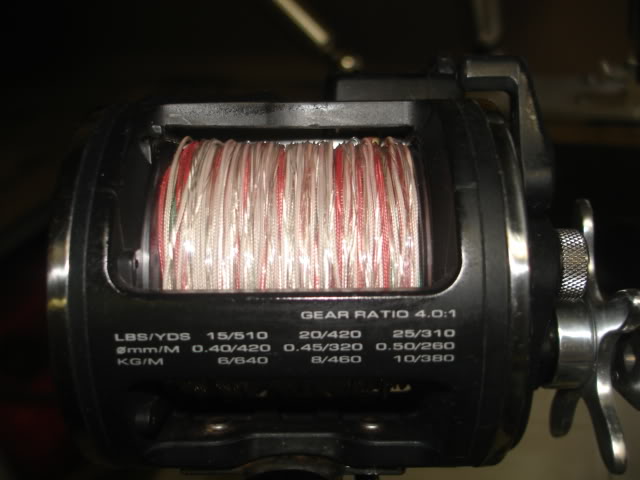
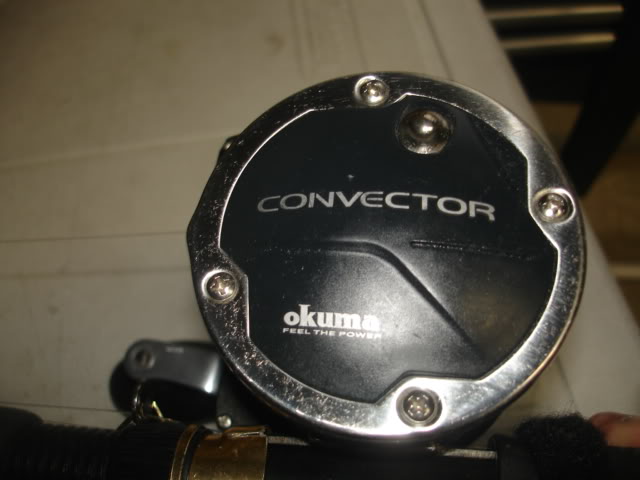
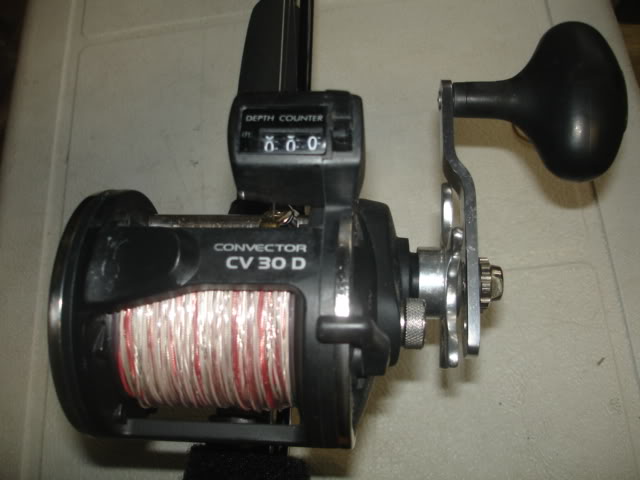
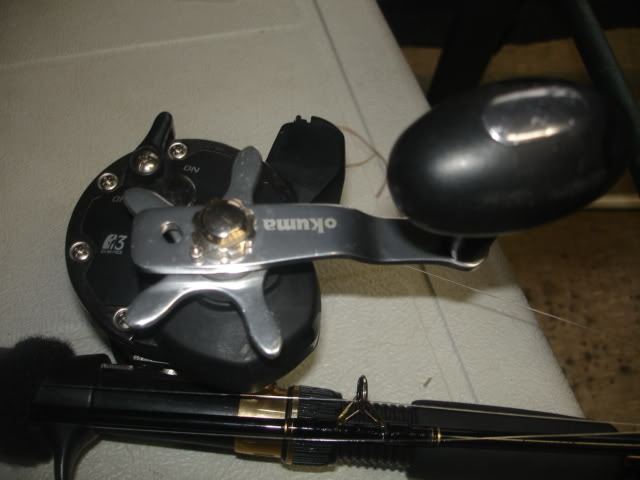
Convector 15D
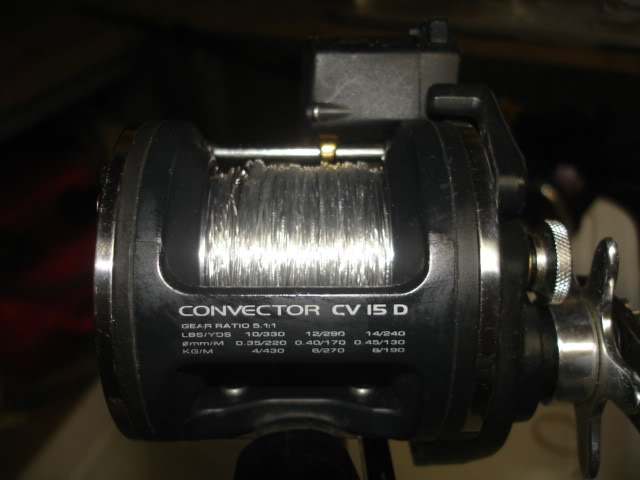
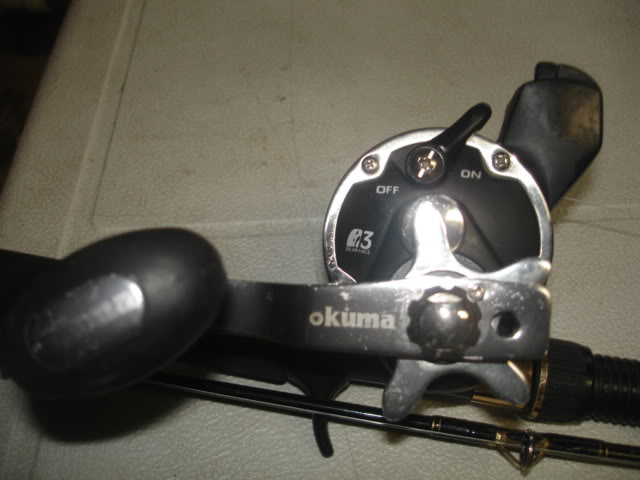
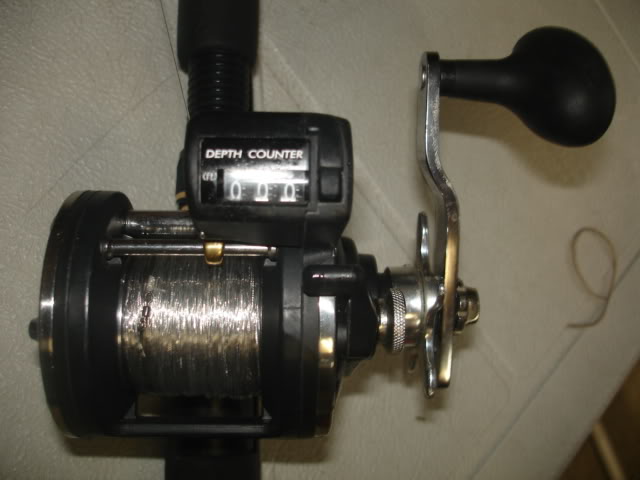
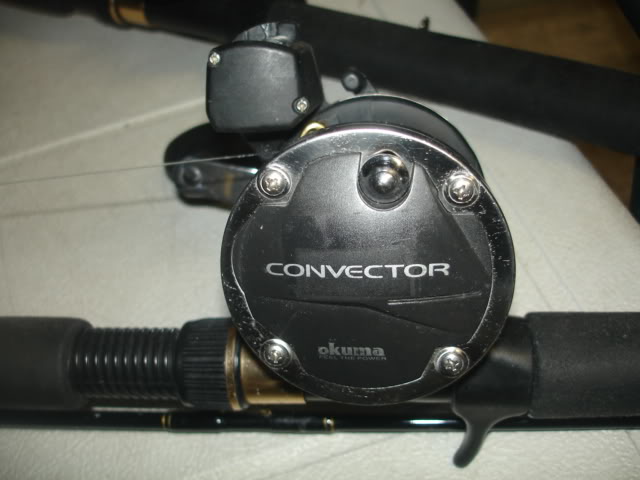
-
First year there were issues with the 19 strand wire. Second year we made the 19 strand wire more user friendly and had no more issues, in fact, nothing but compliments. We make 20lb, 30lb and 45lb 7 strand wire and 19 strand wire in smoke color and bright color.
19 strand 1000ft spool is more expensive and retails for $45.
7 strand 1000ft 30lb retails for $25.
-
Hey I dont know longline ,my son and i just got home from a 10 mile river kayak,canoe trip. In the 20 miles one way from home to drop off first van i saw 5 racoons ,1 opossum,and 2 red tail hawks.and a young fox. All dead ill bet it was the lead wheel weights laying along the road after they ate them they went crazy and ran into traffic.. gues we'll all have to drive around with bumpy wheels(outa ballance)....hey gold is a heavy metal and really safe to mine
 , and cheep i just bought a really heavy gold braclet from a guy on the corner for 5 bucks bet it weighs 2 oz.
, and cheep i just bought a really heavy gold braclet from a guy on the corner for 5 bucks bet it weighs 2 oz.Ive been to gettysburg several time in me life and the lead bullits still have the groves and the balls are round as the day they were shot 150 yrs ago. but i ant no expert.but i does know lead solder was used in copper water lines till early 80,s so if yer house is older and got copper pipe you might be nuts.
Ray you make a good point about older homes. Most homes older then 50 years have lead services, meaning the water flows from the city main through lead pipes into the home. Shouldn't this be the first place of concern?
There is another side of this story that has not been addressed and that is the demand for lead. The demand for lead batteries has increased dramatically over the past 5 years, first from developing countries in the form of new car sales and second from North America in the form of green cars. These green cars use many batteries and it's the large amounts of lead that make those batteries so heavy. Ask any scrap yard who there major buyer of lead is and chances are a battery manufacturer tops the list.
There is an interesting coincidence that lead demand has increased dramatically and lead users are being scared out of the market.
-
Two problems with your argument, Jaychuter.
The first is that you suggest the stuff has been around forever...before we were even on the planet. That's a naive view. Yes, lead has existed as long as the world. But not in a concentrated and purified form. Moreover, it's the accumulation of lead in the environment and chronic exposure that's thought to be a problem. Try sleeping, eating and breathing lead, then make the call.
Second, the biggest problem with lead is birth defects. Forget about the fish and game. Let's talk about a kid who might have lived a normal life, but instead was born with a debilitating illness that requires constant care and breaks the bank. It's one thing to say, "when it's time to go, it's time to go". It's another thing entirely to sentence someone else.
Finally, I'll add an interesting take on this subject: I read lots of old issues of Outdoor Life from the 1960s that my granddad gave me. There's a bunch of articles in there from around the time that the use of certain pesticides was being associated with fish and bird kills. The industry reps argued that the pesticides had no role in the kills and that there was no evidence that the cost of using the pesticides outweigh the benefits. Of course, I'm talking about DDT, one of the most well-recognized carcinogens on the planet.
The use of DDT probably saved as many lives from malaria as it killed, so it's use was somewhat justified. How's that compare with lead? Has lead saved many lives lately? Seems like a crime to me to ignore the facts for convenience sake.
Alcohol creates the largest amounts of birth defects, it's been around for centuries so should we ban the use of alcohol?
When used improperly anything is lethal, education is the key.
We use lead but we coat the lead with plastic so people are not touching the raw lead and then eating food later on as this is where the biggest danger is. I have personally been in contact with each Torpedo Diver we have made, from pouring to paint preparation ( we are approaching the 10,000 mark). Every year I have my blood tested for lead and my lead levels have not changed for 3 years.
I don't believe scare tactics are the answer, I believe education is the answer.
I have also checked into the costs to make Torpedo Divers out of Tungsten and costs are 15 times current costs. I have looked into zinc but zinc weighs almost 40% less then lead and wouldn't be very efficient. The closest usable metal is copper which is 30% lighter.
If lead is banned then rods and reels will have to become much bigger to handle the much larger amounts of drag caused by less efficient metals.
I also agree that most fishing tackle will drastically increase in price and would become less efficient.
-
Congratulations!
-
This came from another board. A federal all lead ban on fishing means no more leadcore, downrigger weights made of lead, dipsies which have lead in them, dive bombs, torpedo divers. We would be reduced to fishing with copper only.
August 31, 2010
Oppose the Proposed Federal Ban on Lead in Fishing Tackle - Public Comment Being Accepted
For more information, contact Gordon Robertson, vice president and Government Affairs lead or Alyssa Hausman, ASA Policy Fellow, x244.
The Situation
On August 23, 2010, the Environmental Protection Agency (EPA) was petitioned by the Center for Biological Diversity and four other organizations to ban all lead in fishing tackle under the Toxic Substances Control Act. This includes sinkers, jigs, weighted fly line, and components that contain lead such as brass and ballast in a wide variety of lures, including spinners, stick baits and more.
It is important that industry members send comments now! Let your voice be heard!
On August 27, 2010, the EPA denied the petition for ammunition but maintained the petition to ban lead fishing tackle. Supporters of hunting and the shooting sports have been successful in having ammunition excluded from this ban.
The petition was presented with the aim of reducing bird deaths caused by the ingestion of lead sinkers and jigheads; however, a study conducted by the U.S. Fish and Wildlife Service found that less than one percent of all waterfowl and other birds such as eagles are killed by lead sinker ingestion.
The reasons for opposing the ban are:
The data does not support a federal ban on lead sinkers used for fishing. In general, bird populations, including loons and other waterfowl species, are subject to much more substantial threats such as habitat loss through shoreline development. Any lead restrictions need to be based on sound science that supports the appropriate action for a particular water body or species.
Depending on the alternative metal and current prevailing raw material costs, non-lead fishing tackle products can cost from six to 15 times more than lead products. Non-lead products may not be as available and most do not perform as well. Mandatory transitioning to non-lead fishing tackle would require significant changes from both the industry and anglers.
A federal ban of the use of lead in fishing tackle will have a significant negative impact on recreational anglers and fisheries resources, but a negligible impact on waterfowl populations.
America's 60 million anglers generate over $45 billion in retail sales with a $125 billion impact on the nation's economy creating employment for over one million people.
Industry members are encouraged to support voluntary angler education programs for the use of lead sinkers and should urge state and federal fish and wildlife agencies to do the same.
How You Can Help
The EPA has opened the petition for public comments. Please take the following four simple steps to oppose this ban.
Officially submit your comments opposing this ban using the EPA's comment page at www.regulations.gov. Comments are due by September 15. You can copy and paste the template message below into the official comment form.
Voice your concerns directly to EPA Administrator Lisa Jackson through ASA's Legislative Action Center . This can be done through ASA's Legislative Action Center. Your letter to EPA Administrator Jackson will also be copied to your two Senators and House member.
In addition, we encourage you to turn the comments below into a letter to FAX to Administrator Jackson on your company letterhead. Please include information about your company. Her FAX number is: (202) 501-1450.
Please FAX a copy of the same letter to your Congressional delegation. You can find their FAX numbers by clicking here and entering your zip code.
Comments to Submit to EPA
As a member of the sportfishing industry, I urge the Environmental Protection Agency (EPA) to dismiss the petition to ban lead in all fishing tackle.
The sweeping petition has many deficiencies including:
Misinformation on sinker use and loss
The actual impact to wild bird populations
The economic impact of higher cost raw materials and that EPA can only regulate the interstate commerce of lead fishing products under the Toxic Substances Control Act (TSCA) and not the use or manufacture.
As stewards of our nation's natural resources, the sportfishing industry continues to seek new developments to minimize our environmental impact. In addition, the Sportfishing industry pays some $115 million in federal excise taxes each year for fisheries restoration.
I am concerned that the results sought by the petitioners greatly exaggerate the biological impacts on waterfowl; ignore the significant economic impacts to anglers, the industry and to fisheries management; and underestimate the potential impact of human health hazards when anglers seek to produce their own fishing sinkers.
In short, I find the proposal lacking scientific rigor and common sense, and urge you to reject the petition.
-
Captain Ken from Off the Hook Charters shows us how to quickly fix wire line that has a kink or fray deep in the spool.
Here is the video link.
-
You can click here for a list of stores where it is available.
-
Captain Ken Biemiller from Off the Hook Charters tells his secret in this video of how to get copper down to deep kings 150 and 200' down
Check out the video http://www.torpedodivers.com/videos.asp
-
We will be shipping the wire to the stores in 2 weeks and it will be available on our website.

Fish Hawk ?
in Open Lake Discussion
Posted
I had no problems reading down to 400' a couple of weeks ago with my depth raider, not sure I need speed and temp any deeper.